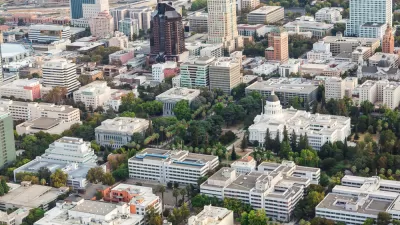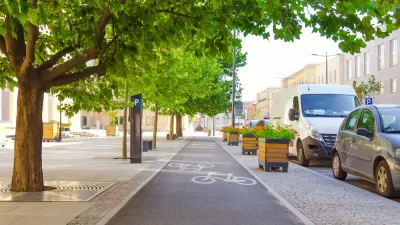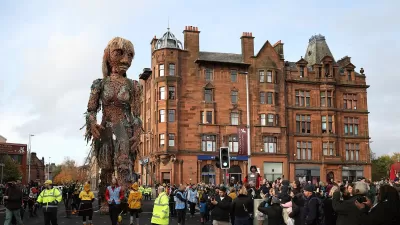Decades of poor urban planning and policy decisions have contributed to "the Glasgow Effect," which has seen higher rates of mortality for Glaswegians compared to similar de-industrialized cities.

Researchers have tied the high rates of mortality for Glaswegians under the age of 65 to decades of poor planning and policy decisions, reports Karin Goodwin of The Guardian. "The Glasgow Effect," as labelled by researchers, has seen a 30 percent higher risk of dying below the age of 65 from the typical causes of cancer and heart disease, as well as the despair diseases of alcoholism and suicide.
The cause of the higher rate of mortality among residents of Glasgow has roots in the policy and planning decisions from the '60s, '70s, and '80s that shifted portions of the population—primarily younger workers and their families—to new towns on the outskirts of the city leaving the poor and elderly in Glasgow's center in high rise housing and peripheral estates.
The schemes of modern Glasgow are often desolate and surrounded by vacant land: 91% of people in Springburn (pdf)– in the north of the city – live 500 metres from vacant or derelict land; Maryhill – in the west – it’s 85%; and in Shettleston – the east – 74%.
This could be having serious effects; earlier this year a statistical analysis of Glasgow (pdf) by Juliana Maantay and Andrew Maroko of City University of New York (CUNY), found a link between poor mental health and the proximity to vacant or derelict link. They also found the effect was lessened when communities had a role in the urban planning process.
Goodwin reports that the tide may be turning in terms of political will to fix the planning mistakes of the past, thanks to new leadership from the Scottish National Party (SNP). However, challenges remain to actually fund the change required to turn around Glasgow's high mortality rate.
FULL STORY: The Glasgow effect: 'We die young here - but you just get on with it'

Planetizen Federal Action Tracker
A weekly monitor of how Trump’s orders and actions are impacting planners and planning in America.

Maui's Vacation Rental Debate Turns Ugly
Verbal attacks, misinformation campaigns and fistfights plague a high-stakes debate to convert thousands of vacation rentals into long-term housing.

San Francisco Suspends Traffic Calming Amidst Record Deaths
Citing “a challenging fiscal landscape,” the city will cease the program on the heels of 42 traffic deaths, including 24 pedestrians.

Amtrak Rolls Out New Orleans to Alabama “Mardi Gras” Train
The new service will operate morning and evening departures between Mobile and New Orleans.

The Subversive Car-Free Guide to Trump's Great American Road Trip
Car-free ways to access Chicagoland’s best tourist attractions.

San Antonio and Austin are Fusing Into one Massive Megaregion
The region spanning the two central Texas cities is growing fast, posing challenges for local infrastructure and water supplies.
Urban Design for Planners 1: Software Tools
This six-course series explores essential urban design concepts using open source software and equips planners with the tools they need to participate fully in the urban design process.
Planning for Universal Design
Learn the tools for implementing Universal Design in planning regulations.
Heyer Gruel & Associates PA
JM Goldson LLC
Custer County Colorado
City of Camden Redevelopment Agency
City of Astoria
Transportation Research & Education Center (TREC) at Portland State University
Jefferson Parish Government
Camden Redevelopment Agency
City of Claremont





























